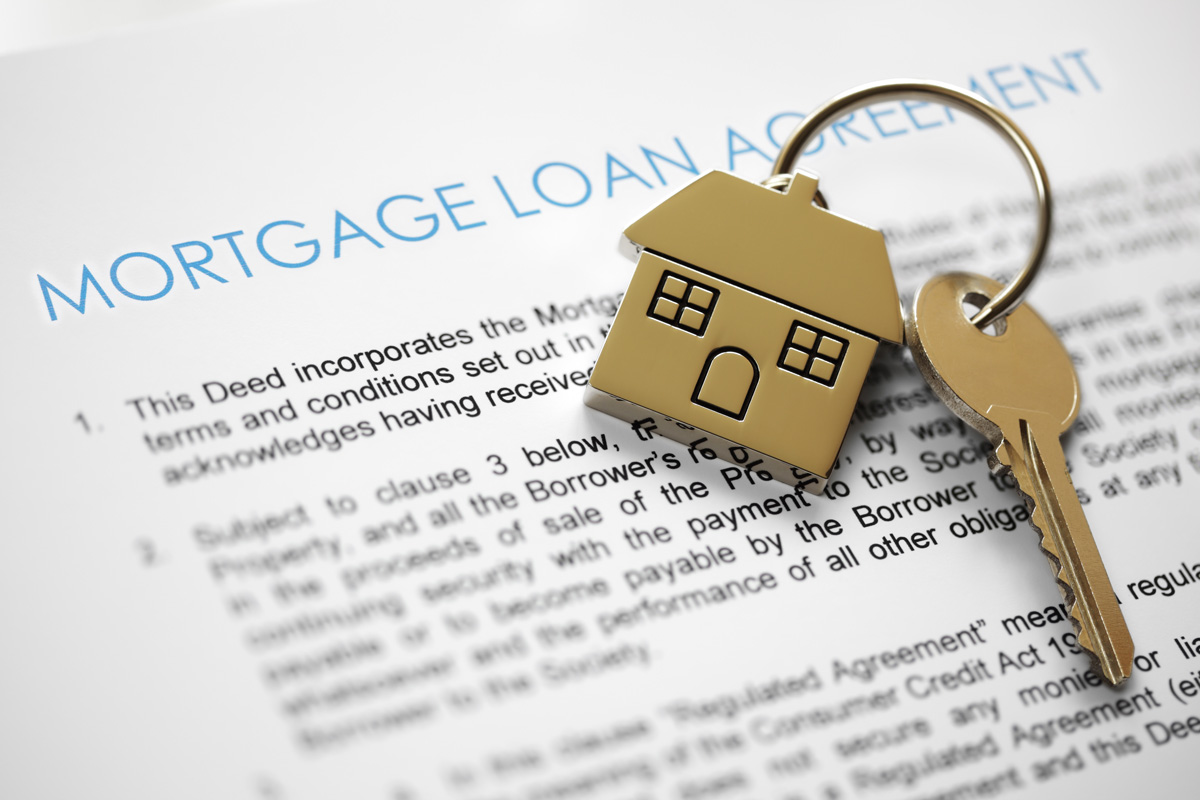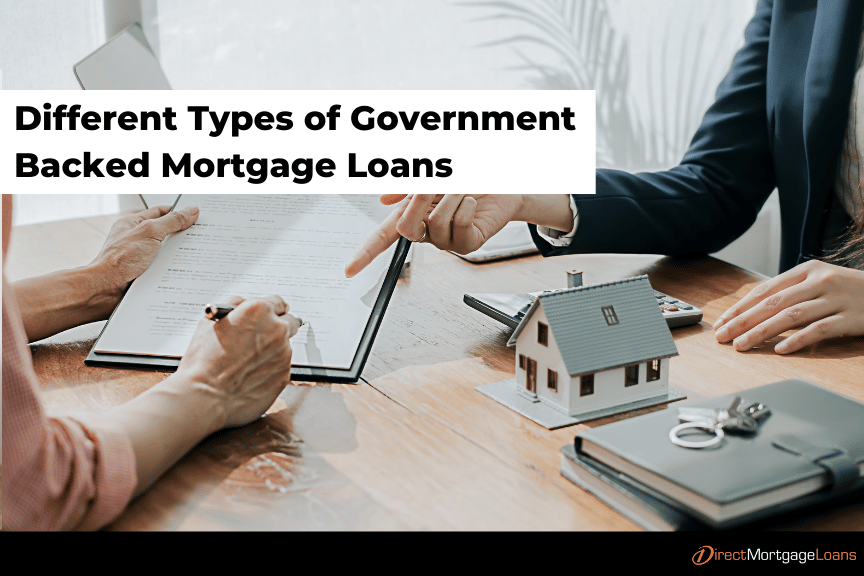Conventional Mortgage Loans: How They Compare to Other Funding Options
Wiki Article
The Vital Elements to Consider When Picking In Between Fixed-Rate and Adjustable-Rate Mortgage Financings
When reviewing home loan alternatives, borrowers encounter an essential decision between fixed-rate and adjustable-rate fundings, each providing possible mistakes and distinct benefits. Trick factors to consider such as passion rate security, predictability in regular monthly settlements, and the effects of prospective price modifications can considerably affect long-term economic health and wellness.Interest Price Stability
When choosing a mortgage, comprehending rates of interest stability is essential for educated decision-making. Rate of interest can considerably affect the overall price of a mortgage, and identifying the nature of these rates is necessary for customers. Fixed-rate home loans supply the advantage of constant regular monthly settlements over the life of the loan, securing consumers from market variations. This security makes it possible for house owners to plan their funds with greater certainty, as they will certainly not be impacted by rising rate of interest prices.On the various other hand, adjustable-rate mortgages (ARMs) begin with lower preliminary rates that might transform periodically based on market conditions. While this can result in reduced payments initially, it also introduces uncertainty, as borrowers may deal with enhanced repayments if rate of interest prices climb. For those taking into consideration an ARM, it is essential to analyze the possibility of price modifications, the capacity for repayment increases, and the length of the initial fixed-rate period.
Ultimately, the selection in between fixed-rate and adjustable-rate home mortgages hinges on individual threat resistance and economic situations. Recognizing rate of interest security aids debtors make notified choices that straighten with their long-lasting monetary goals.
Month-to-month Payment Predictability
While customers commonly prioritize rates of interest security, the predictability of regular monthly payments is just as crucial in the home loan choice process (Conventional mortgage loans). Month-to-month repayment predictability plays an important function in budgeting and financial preparation, as it directly influences a homeowner's cash circulation and general financial wellnessFixed-rate home loans use a consistent monthly payment throughout the life of the loan, enabling borrowers to expect and plan their costs efficiently. This stability can be particularly helpful for novice buyers or those on a fixed income, as it removes the uncertainty connected with fluctuating repayments.
On the other hand, variable-rate mortgages (ARMs) normally feature lower first repayments that can transform in time, bring about potential variability in monthly obligations. While initially enticing, this unpredictability can make complex financial planning, especially if debtors do not account for future rate modifications.
Prospective Price Changes
In the realm of adjustable-rate home mortgages (ARMs), possible rate adjustments stand for a significant element that debtors must meticulously take into consideration. Unlike fixed-rate mortgages, where the rate of interest remains the same for the life of the loan, ARMs are characterized by varying rates of interest that are connected to market indices. This variability can lead to significant modifications in month-to-month settlements, influencing the borrower's economic planning and budgeting.Consumers need to be mindful of the margin and index made use of to determine these adjustments, as they straight influence future interest prices. In addition, ARMs commonly include caps that restrict how much the passion price can increase at each change and over the life of the finance, which can supply some level of defense against radical rate walkings.
Understanding these potential adjustments is crucial for consumers, as they directly influence long-term repayment obligations. Evaluating individual monetary scenarios and risk resistance is essential when making a decision whether an ARM aligns with one's monetary objectives.
Lending Term Considerations
Loan term factors to consider play a pivotal role in the decision-making process for debtors picking between fixed-rate and adjustable-rate mortgages. The length of the finance term significantly affects month-to-month settlements, rates of interest, and overall monetary preparation. Fixed-rate home mortgages typically provide terms of 15 to thirty years, giving security in monthly payments and predictability in budgeting. This can be specifically appealing for borrowers who prepare to remain in the exact same home long-lasting and like the assurance of set repayments throughout the life of the financing.
Eventually, debtors should assess their individual circumstances, economic goals, and market problems when evaluating the ramifications of car loan term options within each home loan type.

Overall Price of Borrowing
The total expense of borrowing is a critical variable that can considerably influence a debtor's selection between fixed-rate and adjustable-rate home loans. Fixed-rate home mortgages offer predictable regular monthly payments, as the rate of interest stays constant throughout the loan term. This predictability can bring about reduced general prices, particularly in a secure or decreasing interest rate setting. Customers can budget plan effectively, understanding their settlements will certainly not fluctuate.On the other hand, variable-rate mortgages (ARMs) typically check this begin with reduced initial prices, causing lowered in advance expenses. These rates can enhance after a preliminary duration, leading to potentially greater long-term costs. Consumers need to think about the regularity and extent of price modifications, along with the overall car loan period, to accurately assess the monetary effects.
Additionally, the overall expense of loaning encompasses not only rate of interest yet additionally costs and various other connected prices, such as shutting expenses and insurance coverage (Conventional mortgage loans). When reviewing mortgage alternatives, borrowers must perform a thorough expense analysis over the life of the car loan. By doing so, they can make an educated decision that lines up with their monetary goals and run the risk of tolerance
Verdict
Interest price security and monthly repayment predictability are paramount for reliable budgeting, while the possibility for rate changes in ARMs presents economic unpredictability. Furthermore, the anticipated period of homeownership and the total cost of borrowing, including passion rates and associated charges, have to line up with specific financial situations and risk resistance.Key factors to consider such as passion price security, predictability in month-to-month settlements, and the implications of prospective rate changes can substantially impact long-term economic health. Interest prices can considerably influence the overall cost of a home mortgage, and identifying the nature of these rates is vital for customers. Unlike fixed-rate mortgages, where the passion price stays the same for the life of the loan, ARMs are characterized by changing interest prices that are connected to market indices. Furthermore, ARMs usually include caps that restrict how a lot the rate of interest price can increase at each adjustment and over the life of the finance, which can give some degree of my latest blog post protection versus extreme rate walkings.
Passion rate stability and month-to-month payment predictability are extremely important for effective budgeting, while the capacity for rate changes in ARMs introduces monetary uncertainty.
Report this wiki page